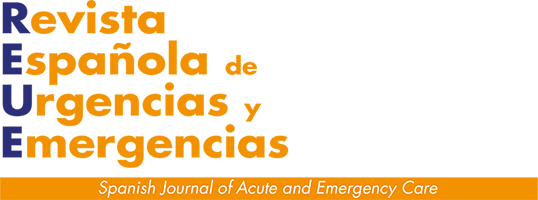Summary
EPITOX Register of Intoxications in Spain. Year 2024
Affiliation of the authors
DOI
Quote
Supervía A, Córdoba F, Ruíz Antorán B, Martín Pérez B, Martínez Baladrón A, Urdangarín A, Ferrer Dufol A y Grupo de Trabajo EPITOX.. EPITOX Register of Intoxications in Spain. Year 2024. Rev Esp Urg Emerg. 2025;4:210–7
Summary
INTRODUCTION. The Spanish Foundation of Clinical Toxicology has implemented an online questionnaire, called EPITOX, with the aim of standardizing the collection of characteristics of intoxications treated in emergency departments (EDs) of Spanish hospitals. This study aims to describe the epidemiological characteristics of intoxications registered in EPITOX in 2024.
MATERIAL AND METHODS. The EPITOX questionnaire collects patient identification data, type of intoxication and toxic agent, episode characteristics (intentionality, mode of arrival at the hospital, place of intoxication), clinical data, lab test results, treatment, and the patient’s destination upon ED discharge. Data are recorded anonymously by the principal investigator at each participating center.
RESULTS. A total of 5,540 intoxications were registered. The patients’ mean age was 38.95 (18.0) years (55.7% men and 65.5% patients of Spanish origin). Most patients (57.1%) arrived by ambulance, 33.7% of intoxications occurred in a public place, and 44.4% at the patient’s home. Recreational intoxications accounted for 47.7% of cases, while 28% had suicidal intent. Ethyl alcohol was the most frequently involved toxic agent (46.3%), followed by pharmaceutical drugs (38.3%), illicit drugs of abuse (28.7%), and chemical products (11.6%). A total of 81% of intoxicated patients were discharged directly from the ED, 3.7% were admitted to the intensive care unit, 2.5% to Psychiatry (an additional 7% required transfer to a psychiatric center for evaluation), and 3.2% to a conventional hospitalization unit. Mortality rate was 0.5%.
CONCLUSIONS. The typical profile of an intoxicated patient treated in Spanish EDs is that of young male of Spanish origin. The most prevalent toxic agent is ethanol, followed by pharmaceutical drugs and illicit drugs of abuse. Although most intoxications are mild, up to 6.9% require admission.

